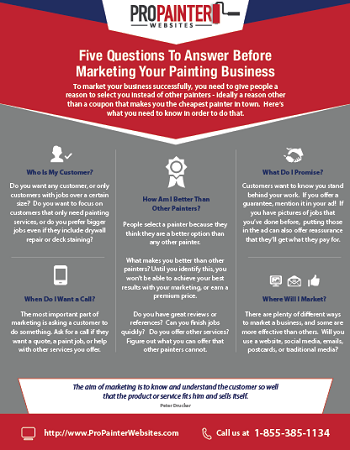Seasonal Factors In Commercial Exterior Painting: Trick Insights You Ought To Recognize
Seasonal Factors In Commercial Exterior Painting: Trick Insights You Ought To Recognize
Blog Article
Content Author-Korsholm Urquhart
When you're intending a commercial external painting task, seasonal aspects can make or damage your results. You'll wish to take into consideration how temperature and humidity effect paint application and drying times. Picking the ideal period can guarantee your paint sticks effectively and lasts longer. Yet which periods are absolutely the best for this kind of work? Let's discover the crucial elements that can impact your task's success.
The Influence of Temperature on Paint Application
When you're preparing a commercial external painting project, the temperature level can dramatically impact how well the paint adheres and dries out.
Ideally, louisville house painters wish to paint when temperature levels vary between 50 ° F and 85 ° F. If it's too cold, the paint may not heal effectively, leading to issues like peeling off or fracturing.
On the flip side, if it's too warm, the paint can dry out also swiftly, stopping proper bond and causing an unequal surface.
You must likewise consider the time of day; morning or late afternoon offers cooler temperature levels, which can be much more positive.
Constantly check the maker's recommendations for the details paint you're using, as they usually offer guidance on the suitable temperature level array for optimal outcomes.
Humidity and Its Result on Drying Times
Temperature level isn't the only environmental aspect that influences your business exterior painting project; humidity plays a considerable duty as well. High moisture levels can slow down drying out times considerably, impacting the general top quality of your paint work.
When the air is filled with wetness, the paint takes longer to heal, which can bring about concerns like bad attachment and a greater threat of mold growth. If you're painting on a specifically damp day, be planned for prolonged wait times between coats.
simply click the up coming web site to keep an eye on regional weather and plan appropriately. Preferably, aim for humidity levels between 40% and 70% for ideal drying out.
Keeping these consider mind ensures your job stays on track and supplies a long lasting finish.
Best Seasons for Commercial Exterior Paint Projects
What's the best season for your commercial exterior painting tasks?
Springtime and very early loss are commonly your best choices. Throughout these seasons, temperatures are mild, and moisture degrees are usually lower, creating perfect problems for paint application and drying out.
Prevent summer season's intense heat, which can cause paint to dry also swiftly, causing poor attachment and finish. In a similar way, winter months's chilly temperature levels can prevent correct drying and curing, running the risk of the long life of your paint task.
Go for days with temperature levels between 50 ° F and 85 ° F for optimum outcomes. Keep in mind to examine the regional weather forecast for rain, as wet conditions can destroy your job.
Planning around these factors guarantees your paint project runs efficiently and lasts longer.
Final thought
In conclusion, planning your business exterior paint projects around seasonal considerations can make a significant difference in the end result. By scheduling job during the excellent temperature levels and moisture degrees, you'll guarantee better adhesion and drying out times. Remember to watch on regional weather report and pick the correct time of year-- springtime and very early loss are your best bets. Taking these steps will assist you achieve a long lasting and expert finish that lasts.
